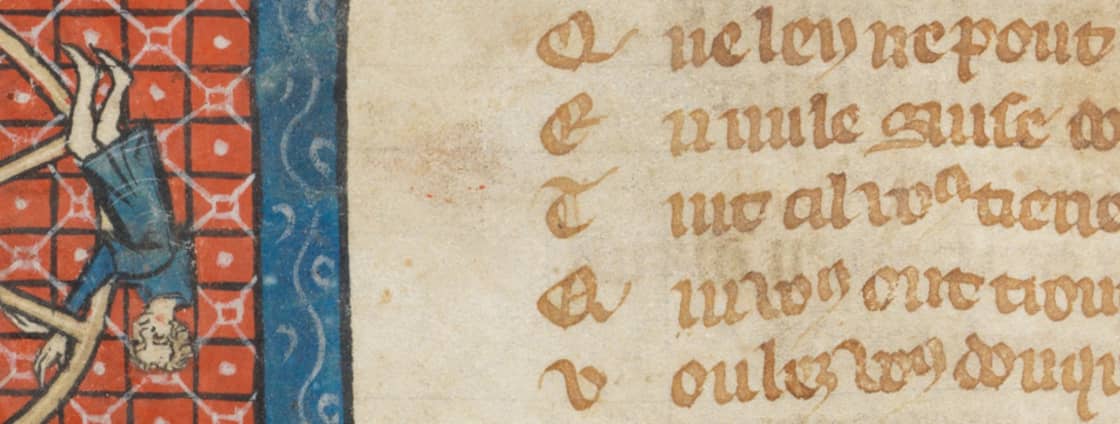|
|

|
|
|
|
|
|
|
|
|

|
1. e-codices 2005 - 2020: Highlights of the last 16 years
e-codices is one of the oldest and best-known digital manuscript libraries and has survived all kinds of crises to date and has grown steadily and continuously. This newsletter would like to point out some of the highlights of the last 16 years.
|
|
|
|
|
|

|
2. e-codices in 2020: A project at a crossroads
The digital library currently consists of 2’538 manuscripts from 97 collections online (1’770 are from the Middle Ages). With a total of 69 successful applications, more than 7.8 million CHF (approx. $8.8 million) in third-party funding has been raised so far (plus 2.6 million CHF or approx. $2.9 million for Fragmentarium). When asked what the most important achievements of e-codices were, Christoph Flüeler, founder and director of e-codices, replied: “From its concept, e-codices has been a national portal from the beginning. Today, this concept is being used as a model by several countries. Technologically speaking, we did not make any new developments ourselves, but we have always made use of the latest technologies (TEI P-5 for manuscript descriptions in 2005, DOI for digital manuscripts in 2010, IIIF in 2014). From a scientific point of view, Fragmentarium, the associated project of e-codices, had a huge impact on the current interest in fragmentology.”
|
|
|
|
|
|

|
3. Fragmentarium: The spark for a new scientific discipline
Fragmentarium was started in 2015 and is online since the end of August 2017. Currently 175 collections from 23 countries are represented, 1’897 fragments have been published and another 2’000 fragments are in process or ready for publication. In addition to six Fellows, we are collaborating with 12 projects from eight different countries. The third volume of the journal Fragmentology will appear at the end of the year.
|
|
|
|
|
|
|
|

|
4. The Rise of Digital Manuscript Libraries
e-codices has witnessed the rise of digital manuscript libraries from the closest quarters and has also played a major role in shaping them.
The first digital manuscript libraries were created over 20 years ago. The very first digital manuscript libraries before 2010 were all pioneering works. Often they were not created at libraries but at universities (Roman de la Rose Project, Johns Hopkins University Baltimore, CEEC, University of Cologne, Carolingian Culture at Reichenau & St. Gall, UCLA). They showed the then still limited possibilities. e-codices was created after two years of preparation in 2005. 721 manuscripts from 30 collections were published at the end of 2010.
In the second decade (2011-2020) the actual foundations for digital manuscript libraries were laid. The most important large (national) portals were also created, including those in Germany (Handschriftenportal), Austria (manuscripta.at), Poland (manuscripta.pl), the Netherlands (eCodicesNL), USA (Digital Scriptorium 2.0), France (Gallica, Biblissima, BMMV), Vatican or Italy (Manus Online). By the end of 2020, e-codices will contain 2'529 from 97 collections from all parts of Switzerland.
What will the next decade (2021-2030) bring us? Christoph Flüeler comments: “The next few years will be characterized by increasing professionalization. I am particularly curious to see how the interaction between digital library specialists and manuscript scholars will develop. At the end of the decade it will be decisive for research whether a manuscript is available in digital form or not, just as in the age of Gutenberg a text could not really be received by the scientific community if it was not available in print.”
|
|
|
|
|
|

|
5. 25% of all medieval manuscripts in Switzerland on e-codices
By the end of the year, e-codices will have published 1’769 medieval manuscripts. Based on a fairly accurate estimate of 7’000 manuscripts in Latin script up to the year 1500, one of four medieval manuscripts are thus edited on e-codices. The largest scientific output is certainly the 586 new manuscript descriptions. These were first published on e-codices, most of them written explicitly for this platform.
|
|
|
|
|
|

|
6. e-codices as early or first adopter: TEI and IIIF
Since the beginning, e-codices has encoded all manuscript descriptions according to the guidelines set by the Text Encoding Initiative (TEI). A total of 3’105, mostly detailed in-depth descriptions have been encoded so far. Since the beginning of the project, i.e. already in 2005, the version TEI-P5, which was still in development at that time (published only in November 2007), was used for this purpose.
In December 2014, e-codices was the first digital library made interoperable with the International Image Interoperability Framework (IIIF) API. The Fragmentarium Laboratory even went one step further by building a library largely based on IIIF, i.e. no longer hosting the images itself, but building them up via interfaces and incorporating an IIIF editor with which the fragments can be edited.
|
|
|
|
|
|

|
7. Following the example of e-codices: eCodicesNL
eCodicesNL is the new portal for medieval manuscripts in the Netherlands. The project prepares the development of a national manuscript portal based on the model of e-codices. Three institutions are involved as partners in the prototype: the House of the Book in The Hague, the Tresoar in Leeuwarden and the Stads- en Atheneumbibliotheek in Deventer.
In the future, all Dutch collections with medieval manuscripts will be able to use the same format, structure and standards. In the Netherlands, there are about 90 institutions, which are comparable in size to Switzerland, in which a total of more than 5’000 medieval manuscripts (until about 1550) are stored.
|
|
|
|
|
|
|
|















